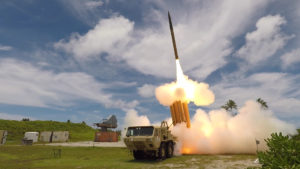
The Missile Defense Agency’s (MDA) $9.6 billion fiscal year 2023 budget request includes increases for various missile defense interceptors, Guam defense, and increased research and development funds over the previous year. MDA’s request is split among $7.9 billion in research and development, $1.166 billion in procurement, $542 million in operations and maintenance and $47 million in military construction. The research and development funds are over $600 million more than Congress appropriated in FY ‘22 but the procurement request is $1.445…

 By
By 











